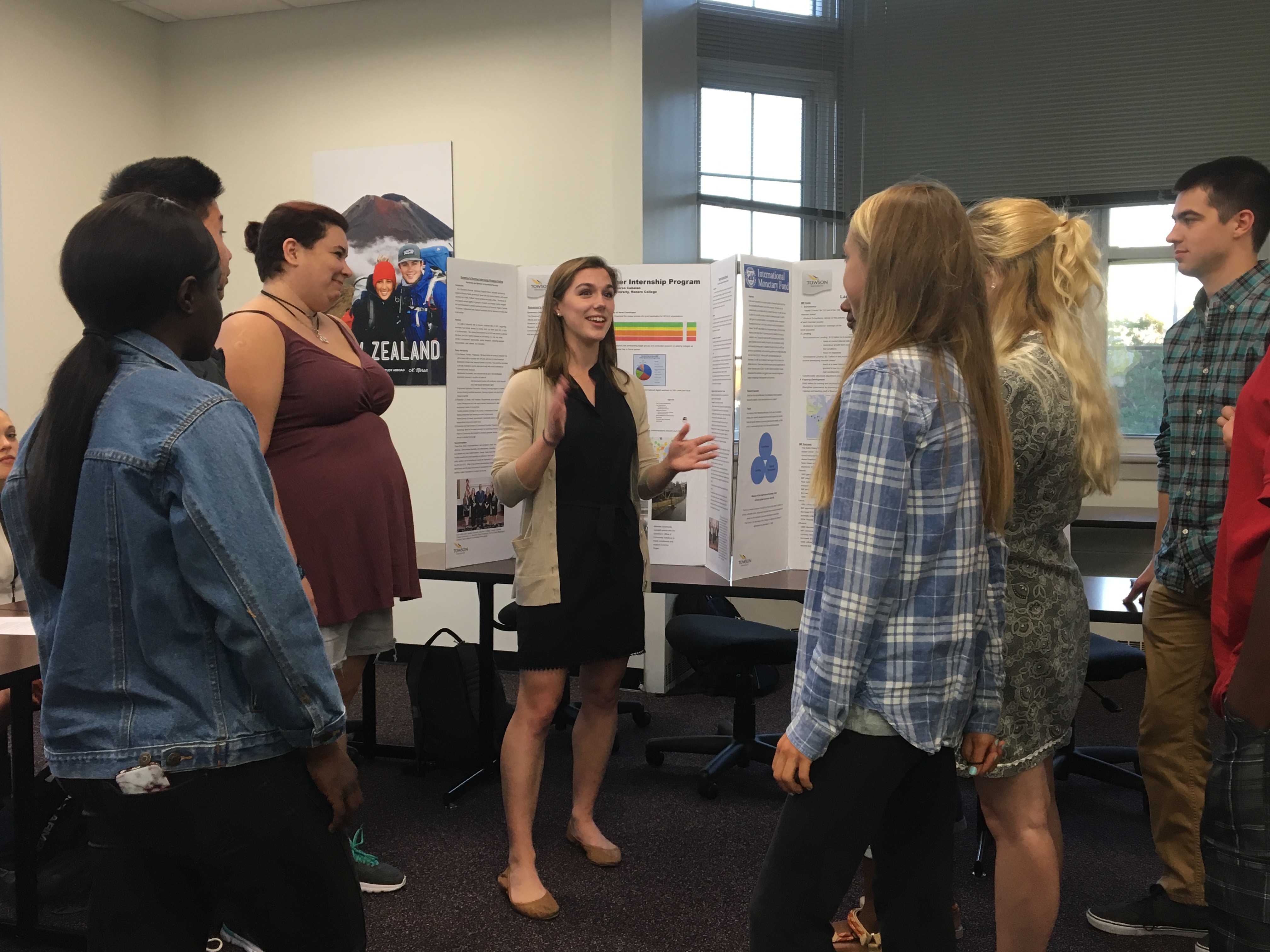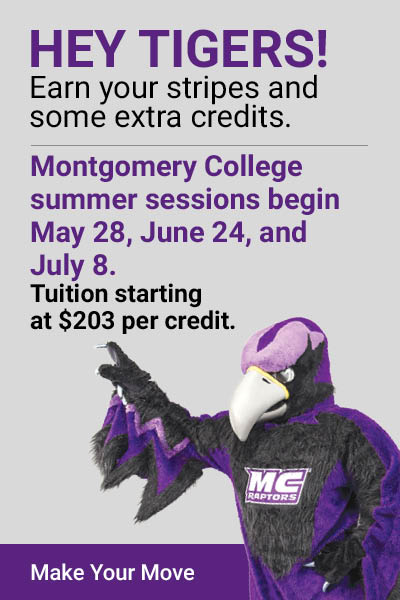
Undergraduate Research Club forms, busts myths
By: Amanda Carroll, Staff Writer
Photo by Amanda Carroll/ The Towerlight
Newly established this semester, the Undergraduate Research Club hopes to raise the profile of undergraduate research and independent study opportunities on campus for students of all levels and academic backgrounds.
Club President Lauren Cahalan founded the club in the hopes that it can “provide a forum where students can come and ask any questions they may have about undergraduate research” and get peer-to-peer support from students with diverse academic backgrounds.
“Whether a student is a freshman, senior, has never done research before or has done five projects and has gotten published, we want to be an environment where people can learn from each other and build a love of [undergraduate] research within Towson, because we know it’s there, we just want to highlight it,” Cahalan said.
As a double major in economics and political science with a minor in business, undergraduate research was not immediately on the radar for Cahalan. After learning about the opportunity to pursue undergraduate research at an Honors College meeting, her first reaction was “oh my gosh that sounds really overwhelming – I’m not a science major.”
It was through a course with political science professor Alison McCartney that Cahalan gained an interest in research. The course sparked her interest, and she pursued additional research and independent study opportunities. Through internships with the Governor’s Summer Internship Program and Brown Advisory, she has applied her research skills in the fields of public service and finance.
Cahalan identified “just knowing that [undergraduate research] exists” as one of the club’s main goals.
“That was my problem going in — I didn’t think my major would ever use research and now I use it all the time,” she said.
The creation of an undergraduate research club has been on the minds of the club’s advisors — McCartney, Assistant Provost Bethany Pace and Honors College Director of Co-Curricular Programs and Constituent Relationships Rio Napoli — for about two years.
McCartney, who serves as one of the club’s advisors, argues that the genesis of the club would “not have been possible without the leadership and drive of Cahalan.”
Although undergraduate research is taking place across TU, misconceptions about what it is and how to get involved can be barriers for students and professors alike.
McCartney cites myths such as not being qualified, or that research is “just like writing a paper required for any class,” or conversely that “research is only for undergrads at so-called ‘elite’ universities,” as barriers that students encounter when contemplating whether to do research — or even approaching the idea of it.
Club member and Honors College senior Tim Bynion shares this perspective.
“I think independent research is something that a lot of students brush off because it either sounds too hard or they don’t know how to get started with it,” he said.
Napoli sees the club’s role as an antidote to this misconception.
“There is something about peer-to-peer support when it comes to taking on the seemingly ‘intimidating’ challenge of an undergraduate research experience,” Napoli said. “Faculty and staff encouraging students to participate is great, but hearing from another student who has been in their shoes means a lot to students who are considering research for the first time, or maybe haven’t ever considered it at all.”
From a faculty standpoint, misconceptions can persist as well. McCartney identifies a lack of information about process and time commitments for approaching undergraduate research as a possible barrier. She incorporates her own research into the courses she teaches.
“I think that it is important for professors to model and explain the research process to show how engaging it is, how to overcome setbacks, how to handle criticism, how to evaluate evidence and quality, and the value that research brings to society,” McCartney said.
For both students and faculty, McCartney sees “gathering and disseminating accurate information” as well as well as “showing examples of successful, thoughtful research by and with undergraduates in all majors” as two ways the Undergraduate Research Club can combat stereotypes and misperceptions.
“The reality is that students can participate in undergraduate research and creative activity projects in every major from art and design to elementary education and everything in between,” Pace said.
Undergraduate research or independent study can be an opportunity for students to distinguish their resumes before seeking graduate education or entering a career.
McCartney noted the way research can set students apart from their competition to employers.
“If you want to set yourself apart in job and grad school applications, showing that you have the creativity, the drive and the intellectual depth to design your own project and the ability to work with a professor on a higher level to complete that project is a prime way to do so,” she said.
Bynion agreed, acknowledging the importance of research projects in making students competitive candidates when finding a job.
“In today’s world, you have to do whatever you can to make yourself competitive, and completing a research project shows that you take initiative and that you have the ability and perseverance to complete long and difficult projects,” Bynion said. “This club will provide a forum for students to gain that kind of invaluable experience.”
Cahalan plans on featuring student and faculty research in future meetings, as well as bringing in outside speakers who can share insight on graduate school and career applications of research. She also plans on providing time for students to practice research presentations and get tips on everything from how to seek out opportunities to conference etiquette.
McCartney sees this new club as “an important opportunity to expand [students’] learning without having to take on another class and even contribute to improving another student’s research project by asking questions from another disciplinary viewpoint.”
According to Cahalan, the club’s collaborative nature is essential.
“There are so many cool things that professors are doing, that students are doing, and that students are doing with professors,” she said. “Towson is a place where you can do what you want to do you just have to take hold of it yourself- we want to be an environment for that.”
Through the club’s five committees – communications, post-graduation opportunities, events, independent study/faculty relations, and conferences/grants/journals – students can get involved by spreading the word about undergraduate research internally and externally.
“It is important for the URC to exist because the club cultivates a sense of community among TU’s student researchers, while also serving as an example to current and prospective students of the high-quality research currently undertaken at TU,” Pace said.

